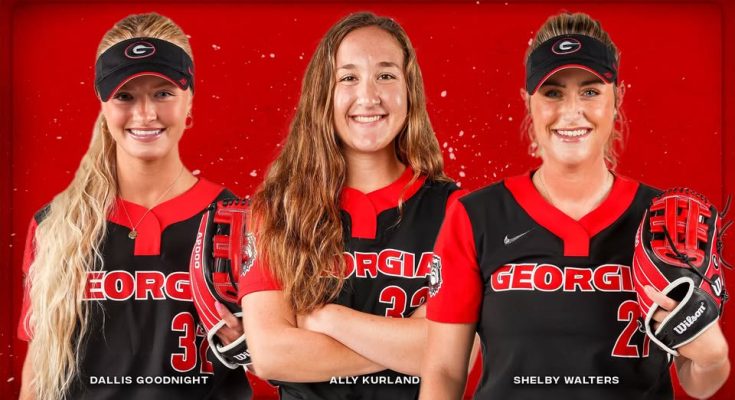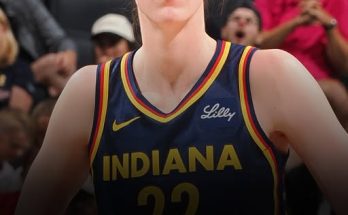**Georgia Softball Reloads for 2026 With Addition of Five Impact Transfers Poised to Elevate Program**
The Georgia Bulldogs softball program has long been a powerhouse in the SEC, consistently competing at the highest level under the leadership of head coach Tony Baldwin. As the team looks ahead to the 2026 season, the Bulldogs have made a significant statement by adding five impact transfers, each bringing a unique skill set that could propel Georgia back to the Women’s College World Series. With a mix of power hitters, elite defenders, and dominant pitchers, these additions signal that Georgia is reloading, not rebuilding, and is poised to make a deep postseason run.
In today’s collegiate athletics landscape, the transfer portal has become an essential tool for programs looking to quickly address roster needs. For Georgia, the 2025 season exposed some gaps—particularly in pitching depth and offensive consistency—that needed to be addressed to compete with the likes of Oklahoma, Texas, and Tennessee. Recognizing this, Baldwin and his staff went to work, identifying players who not only fit the team’s culture but also filled critical roles.
The result? A haul of five transfers, each with proven experience at the Division I level, ready to make an immediate impact. Let’s break down how these players will shape Georgia’s 2026 campaign.
The biggest addition to the Bulldogs’ roster is undoubtedly Emily Carter, a flame-throwing right-hander from UCLA. Carter, who struggled with injuries during her time with the Bruins, has shown flashes of brilliance when healthy, including a 1.98 ERA in limited action last season. Her ability to command a devastating rise ball and a sharp-breaking curve gives Georgia a true ace in the circle—something they lacked in 2025.
If Carter stays healthy, she could form a lethal one-two punch with returning starter Madison Kerpics, giving Georgia the kind of pitching depth needed to navigate the grueling SEC schedule.
Speed and defense win games, and Jordan Harris brings both in abundance. A former standout at Florida State, Harris is a dynamic leadoff hitter with elite base-stealing ability (42 stolen bases in two seasons) and a .350 career on-base percentage. Her presence at the top of the lineup will give Georgia a spark they’ve missed since the departure of All-American leadoff hitters in recent years.
Defensively, Harris covers ground in center field like few in the country, making her a perfect fit for the Bulldogs’ outfield. Her experience in big games—including multiple WCWS appearances—will be invaluable for a team looking to take the next step.
Power hitting was a concern for Georgia last season, but Mia Rodriguez’s arrival should help solve that problem. The former Texas A&M slugger brings a potent bat, having blasted 18 home runs in her two seasons with the Aggies. A natural third baseman, Rodriguez also provides defensive stability at the hot corner, an area where the Bulldogs have been inconsistent.
Her ability to drive in runs—she tallied 62 RBIs in 2025—makes her a perfect middle-of-the-order hitter, complementing returning stars like Sara Mosley and Jayda Kearney. If Rodriguez adjusts quickly to SEC pitching, she could be one of the most dangerous hitters in the conference.
Versatility is key in softball, and Lexi Gomez brings exactly that. A former standout at Arizona, Gomez has played multiple positions, including second base, shortstop, and outfield. Her defensive flexibility allows Baldwin to mix and match lineups based on matchups, a luxury Georgia didn’t have last season.
At the plate, Gomez is a contact hitter with a knack for clutch performances (.335 career average). Her ability to put the ball in play and move runners over will be crucial in tight SEC games where small ball often makes the difference.
The final piece of Georgia’s transfer puzzle is Rachel Bennett, a two-way player from Louisiana who adds depth in multiple areas. As a pitcher, Bennett boasts a deceptive changeup that keeps hitters off balance, and she posted a 2.45 ERA last season. At the plate, she’s a reliable pinch-hitter with power potential.
Bennett’s role may be as a swing player—someone who can start in the circle when needed or provide a bat off the bench. Her presence gives Baldwin even more options in high-leverage situations.
Last season, Georgia finished with a strong record but fell short in the Super Regional round, exposing some weaknesses in pitching depth and offensive firepower. With these five additions, the Bulldogs have addressed those concerns head-on.
– **Pitching Reinforcements:** Carter and Bennett bolster a staff that was overly reliant on Kerpics last season. If Carter stays healthy, Georgia now has two legitimate aces, something only a handful of teams can claim.
– **Offensive Balance:** Harris adds speed, Rodriguez brings power, and Gomez provides consistency. This trio, combined with returning stars, makes Georgia’s lineup far more dynamic.
– **Defensive Upgrades:** Harris in center field and Rodriguez at third base solidify key defensive positions, reducing the errors that cost Georgia in tight games last year.
The SEC is the toughest conference in college softball, and Georgia knows that reloading through the portal is necessary to keep pace. These five transfers aren’t just depth pieces—they’re difference-makers who have already proven themselves at the highest level.
If the chemistry clicks and the new additions adapt quickly, the Bulldogs have all the pieces to make a run at Oklahoma City. The pitching staff is deeper, the lineup is more balanced, and the defense is more reliable. In a sport where small margins decide championships, Georgia’s aggressive portal strategy could be the key to breaking through in 2026.
For Bulldog fans, the message is clear: Georgia softball isn’t just hoping to compete next season—they’re built to win it all.



